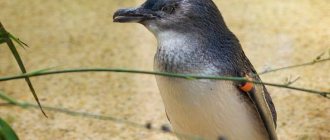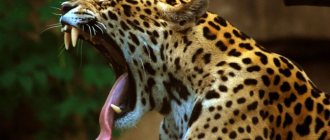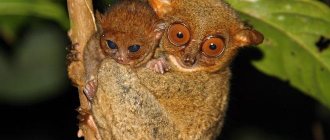“Sea inhabitants endowed with intelligence” - that’s what they are called throughout the world. Good-natured inhabitants of the oceans and seas, who, like people, can talk, hunt in groups and help each other, they are the smartest animals on the planet. As you may have guessed, we will talk about dolphins.
These incredibly smart and charming mammals are familiar to everyone since childhood - legends are made about them, songs are written and films are made. And for good reason, because the intelligence of dolphins is often equated to that of humans, and that is why they are so easy to get along with. In our selection, we will try to bypass the pile of scientific facts and intricate terms, and will try to show the multifaceted beauty of these marvelous animals.
bottlenose dolphins
Black Sea dolphins are the most important photo models for posters decorating dolphinariums around the world. A long silver face, with a sly smile on a toothy beak - this is the image to which both adults and children are accustomed. Few people know that bottlenose dolphins live in almost all the oceans of the world and are one of the most active “rescuers of people.” These animals, from 2 to 4.5 meters long, can reach speeds of up to 42 kilometers per hour, sometimes jumping above the water surface to a height of about 5 meters. Thanks to their special brownish-grayish color and sometimes barely noticeable spotted linear pattern on their sides, these bottlenose dolphins are one of the most attractive representatives of the dolphin genus.
Nutrition
Since everyone knows that these mammals are extremely kind and peaceful creatures, the question arises: what do dolphins eat? These animals eat only fish, and most of all they prefer anchovies and sardines.
To get food, dolphins gather in a school, find a school of fish, and then drive all the fish into a dense group, while emitting special sounds that contribute to the unification of the school.
Dolphins often hunt together with sharks, and during this process no hostility is observed between them.
Killer whales
The bright black and white color and predatory nature distinguish this marine mammal from the dolphin family. Being the only representative of the killer whale genus and rightfully sitting at the top of the marine food chain, it amazes with its size, reaching a length of up to 10 meters.
Natural hunters are also big eaters, and when food is scarce they become quite aggressive. This dolphin has strong spike teeth, sharp fins and a powerful tail, which makes its beauty frightening. However, we emphasize that these formidable dolphins, together with the good-natured bottlenose dolphins, are the only representatives of their family capable of recognizing themselves in the mirror.
Class affiliation and diversity of species
Dolphins are not fish, as some people believe. These are true mammals of the order Cetaceans.
As representatives of their order, dolphins are considered relatives of whales and killer whales - huge and powerful inhabitants of the seas and oceans.
Scientists estimate that there are more than fifty species of dolphins.
The most common are the white-beaked and Atlantic white-sided dolphins, the black dolphin and the beautiful graceful bottlenose dolphins.
They are the ones that people often encounter near the shores of water bodies. This species is the most studied and tamed by people.
Bottlenose dolphins are featured in films and exhibition shows. They take part in special treatment projects aimed at the rehabilitation of children with various psychological problems.
Common dolphins
Based on the name of this dolphin, its sides are painted white, setting off the blue-black or black-brown color of its body. The common dolphin, as it is popularly called, is the most common species, and rather than listing its habitats, it is easier to name those where they do not exist. These animals are freedom-loving, so they are not found in dolphinariums. In the sea, they can be recognized not only by their white sides, but also by their slightly flattened and elongated muzzle, similar to a beak.
Habitat
Among the places where dolphins live, one can distinguish such types of bodies of water as the sea, ocean and large freshwater rivers. These mammals are distributed almost throughout the planet, with the only exceptions being the water bodies of the Arctic and Antarctic.
Look - Capybaras: habitats, lifestyle and description of the rodent population. 110 photos and videos of main types
Generally, dolphins like to be in large open spaces where they can easily move at high speed.
Gray dolphins
The rather discreet name of this species does not deprive it of its beauty, but only leads to bewilderment and amazement after what it sees. A powerful body covered with spots, stripes and scratches, an unusual shape of the muzzle, a unique concave groove running along the axis of the entire body - all this gives the animal a fascinating appearance. Due to their good-natured nature, dolphins of this species communicate with all their relatives, although they often end up with a lot of scars during games. However, as you know, scars adorn males, so their beauty is unquestioned.
Cross dolphins
Another representative of the black and white color, the combination of which on the belly and back represents a “Maltese cross”. An interesting fact is that depending on the angle from which this dolphin is viewed, its color can transform into a pattern called an “hourglass”, thus presenting a unique spectacle to the viewer. Another feature of this species is that dolphins simply love to “wave ride”, often changing their route to ride on the crests of waves left by passing ships.
The first days of life of the cubs
A newborn baby accumulates the required amount of subcutaneous fat while still in the womb. Immediately after birth, the small animal tries to swim on its own. Of course, this turns out very badly. From the outside we can say that he is in weightlessness and is not doing what he wants. The mother immediately comes to the rescue.
Dolphins are mammals; the female feeds her baby with milk, like a small child. Everything is like people. As the dolphin grows, it consumes less and less milk, and after a year it does not need it at all. Around this time, he begins to eat fish on his own and catches it for himself. The mother tries to pass on all the skills she knows about getting food and communicating in the herd. The exercises take place in the form of a game naturally, quite easily and quickly.
The first days after birth, the sucklings do not swim away from their mother, they are side by side. This way they save little energy at that time. As you grow, this habit becomes weaker and disappears completely. The baby is growing at a fast pace. Its size doubles during the lactation period.
Motley dolphins
Dolphins living in the southern hemisphere were named after Philibert Commerson, who first described this species. Their peculiarity lies in their rather “alive” behavior, relative to their relatives, and their incredible “up and down” swimming tactics, which allows them to better search for prey. Their color is not so rare - white and black - what is unique is its distribution and clarity of boundaries: the head and chest are black, the throat and body are white, and the tail is again black. These dolphins (males) are also distinguished by a special black spot on their belly, reminiscent of a tear.
Dolphin mating and reproduction
Dolphin mating can occur at any time of the year. The leader of the pack usually mates with females.
Pregnancy in females lasts about 18 weeks and is not easy. They become heavy and clumsy, and during this period they are most vulnerable.
Typically, a female gives birth to one calf approximately every two years. Dolphins mate and give birth to young while moving.
Newborn dolphins are born tail first. From the first minutes of life, they are able to follow their mother, who, together with other members of the pack, takes care of the babies, helping them rise to the surface.
The cub feeds on mother's milk for up to 1.5 years and grows quickly. From his relatives he learns hunting and other life wisdom, gradually beginning to participate in adult life.
Irrawaddy dolphins
Sacred animals of Laos and Cambodia, so carefully protected in Asian countries, dolphins are among the most rapidly dying out. They lack a beak, therefore they are unique and original in their beauty. Their dorsal fin is also special - it is located very close to the tail, which gives the dolphin extraordinary maneuverability. These animals often accompany fishermen and help in driving fish. They are extremely friendly and sociable,
Grinds
Another species of dolphin, slightly different from the appearance we are used to. These long-finned mammals have a forward-set dorsal fin and a large pad of fat on the forehead, giving the head a spherical shape. It would seem that the appearance is funny and one should speak with caution about beauty, however, the grace and spindle-like shape of the long body take their toll - the dolphin becomes one of the main attractions of the world aquarium.
External description
There are many photos of dolphins on the Internet, where you can see elongated animals with a smooth, streamlined body. Next, we will look at other distinctive appearance features inherent in these representatives of the cetacean order:
- Inside the mouth, which is somewhat reminiscent of a beak, there is a huge number of small teeth (from 80 to 100) shaped like a cone.
- Almost every representative of these mammals has a protruding fin located on the back.
- The length of an adult animal can vary, from 2.5 m and longer, depending on the type of dolphin.
- The transition from the frontal part to the muzzle is clearly visible.
Dolphins have very small eyes, as a result of which they have poor vision. But this is not a problem for them, since these animals do not need excellent vision - other organs help them in hunting.
Instead of nostrils, these mammals have a blowhole, which is located on the crown of the head. This is why dolphins need to breathe air from time to time.
Malaysian dolphins
Dolphins with the most numerous variations of names are also distinguished by their size, reaching no more than 2.5 meters. Called Sarawak, short-beaked or Fraser's dolphins, these animals captivate with their color - against the background of a gray body there is often a black stripe, called a “bandit mask”.
Large-toothed dolphins
These dolphins, not distinguished by their slenderness and grace, are the only ones of their kind, and therefore are valuable for world science. First described in 1823 by Georges Cuvier, this species, due to its narrow snout, was given the name "Steno bredanensis", which means "narrow". Another distinctive feature of these dolphins is that there are dark rings around the eyes, and the whole body is covered with white spots - often shark bites, thanks to which these dolphins acquire, albeit sad, but unusual beauty.
Chinese dolphin / Sousa chinensis
The freshwater dolphin, a unique inhabitant of Southeast Asia, will complete our list. In 2022, the Chinese Endangered Animals Commission declared the species extinct.
It has an unusual fin on its back, which is why it was often called the “flag bearer.” In China it is called "baiji". The inhabitant of freshwater lakes and rivers of the Chinese province of Wuhan was discovered in 1918.
Ecology and lifestyle are practically not studied. A characteristic feature is the elongated beak. Babies are born completely black, and over time the body color lightens. It is a pity that this species has disappeared from our planet.
?
White-faced dolphins
The inquisitive marine inhabitant is quite common in Russia and lives preferably in the coastal zone. Its color is easy to guess, since the name speaks for itself. The peculiarity of these dolphins is not only their appearance, but also their amazing vocal range, which includes not only screams, clicks and whistles, but also other types of vocalizations, thanks to which dolphins communicate with all representatives of the cetacean order.
Voice and speech
Dolphins communicate with each other in their own unique language, consisting of many different signals and sounds, which can be very low and reach ultrasonic frequencies.
Listening to the speech of these mammals, you can hear sounds similar to barking, chirping, whistling or clicking. Interestingly, in addition to individual sounds, dolphins transmit information to each other by putting them into words or even sentences.
Note!
- Euthanasia of animals.
- Spitz. Features of the breed.
Car hammock for dogs. What it is?
White-bellied dolphins
These dolphins live only off the coast of Chile, so only a small number of people can see their rare beauty. Until recently, fairly small dolphins with selective (judging by their name) colors were called “black”, but scientists considered this name to be insufficiently reliable, with which we cannot but agree.
Pygmy killer whale
Quite rare and little-studied dolphins are distinguished by their changeable character: in captivity they are harsh and obstinate, in freedom they are sociable and friendly. Their beauty lies in their special – deep black color with light gray sides. Also called “black” or “Fareza”, this dolphin does not show active acrobatic skills, and only occasionally appears above the water.
Relationships with people
People and dolphins have a long and complex history: until recently, animals were actively hunted, which led to the complete and partial extinction of some species. After fishing was banned, the situation got better, but a new trend emerged: catching these animals for show (especially since they are very smart and catch everything on the fly) and giving people far from the sea the opportunity to swim with dolphins. It should be noted that the idea is not the best, because if in natural conditions the inhabitants of the sea live from thirty to fifty years, in captivity - only seven.
Their rapid death is primarily influenced by an overly passive lifestyle, even despite constant training to participate in the show, extremely limited space and water quality: the lack of a full range of nutrients and minerals they need.
Recently, people and dolphins have learned to interact better (primarily this concerns humans, since these animals are sociable, friendly and peaceful). Moreover, communication with these mammals benefits almost everyone: by giving the opportunity to listen to the songs of dolphins, communicate, stroke the blue back, feed fish, swim with dolphins, psychotherapists and doctors effectively use them to treat diseases in children such as cerebral palsy, early childhood autism, etc.











